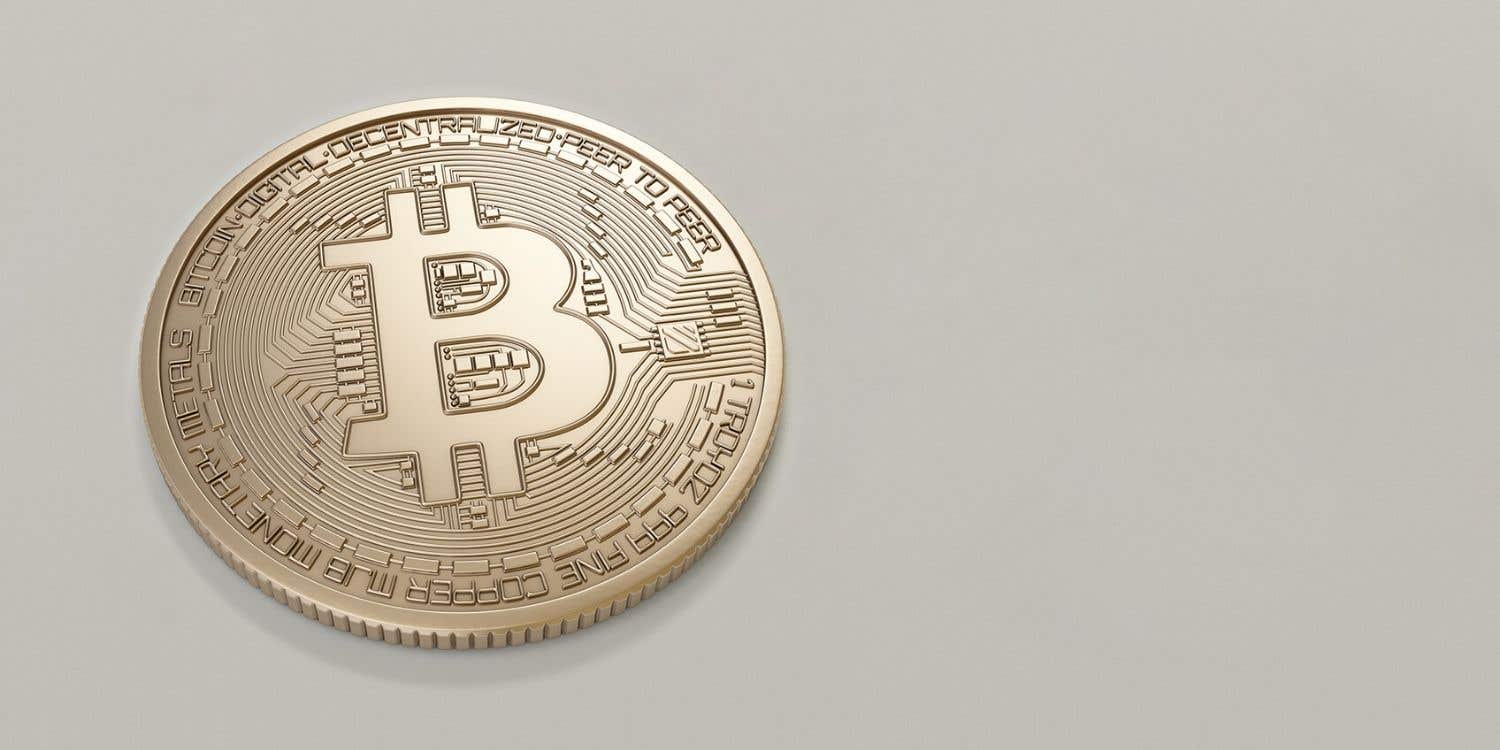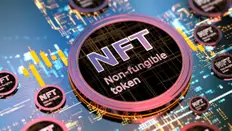Συνομίλησε με την Ava - Την AI Επαγγελματική σου Σύμβουλο
Γειά σου, είμαι η Ava, η AI οδηγός σου για την επιτάχυνση της επιχείρησης σου!
Αν έχεις ήδη μια επιχείρηση ή αν ονειρεύεσαι να ξεκινήσεις μια, είμαι εδώ για να σε βοηθήσω να δώσεις ζωή στο όνειρο σου με τη χρήση AI freelancers. Μοιράσου τους επαγγελματικούς σου στόχους, και μαζί θα δημιουργήσουμε μια εργασία στην οποίαν οι ταλαντούχοι freelancers μας θα δώσουν προσφορά. Ας δώσουμε ζωή στο όνειρο σου!
Έχω επιχείρηση
Ξεκινάω μια επιχείρηση
Κάτι πήγε στραβά κατά την αποστολή αυτής της συνομιλίας στο email σου. Παρακαλούμε δοκίμασε ξανά αργότερα.
Μπορείς να αποθηκεύσεις τη συνομιλία σου μόνο μια φορά κάθε ώρα. Παρακαλούμε δοκίμασε ξανά αργότερα.
Η συνομιλία σου είναι πολύ μικρή. Συνέχισε να συνομιλείς με την Ava για να ενεργοποιήσεις την αποθήκευση.
Introduction to cryptocurrency and blockchain
An explanation of blockchain and cryptocurrency along with an overview of its history, innovations and potential future.
15 Νοε 2021 • 9 λεπτά ανάγνωση
Ενημερώθηκε στις 23 Νοε 2021 από τον/την Mac Wheeler

Professional Content Marketing & Development
Η αντιγραφή στο πληκτρολόγιο απέτυχε, παρακαλούμε δοκίμασε ξανά αφού τροποποιήσεις τις άδειες σου.
Αντιγράφηκε στο πληκτρολόγιο.

What is crypto?
When Satoshi Nakamoto first launched Bitcoin (BTC) in 2009, by implementing the first consumer-focused blockchain, he could never have guessed how far this new technology would go in the next decade.
Bitcoin and its associated blockchain demonstrated a working new model for managing critical data. Something that was previously done using databases. However, crypto offers a more elegant solution. Being simple, secure, and anonymous.
Since Bitcoin was first introduced, tech vendors have been finding additional ways to use crypto technology to manage transactions. Below, we are going to look at crypto in more depth. How it works, its history, what it is used for, and where it is going.
Blockchain enables crypto
Blockchain is the enabling technology behind cryptocurrencies and other crypto applications. The idea behind blockchain is very simple, and intended to solve all of the problems faced when using a traditional database to store critical transactions.
Such as data being deleted or changed by accident or nefariously. Blockchain doesn’t allow past transactions to be changed or deleted, only read. The usual example here, is to explain how a blockchain would keep a record of your bank balance.
A traditional database would add or subtract to your balance whenever a transaction takes place.

Blockchain however, doesn’t keep a running total of your bank balance. Instead, your balance would be the sum of all of the previous transactions. With these past transactions being read-only, they can never be changed or deleted.
Because these transactions cannot be edited, only read, your balance will always be perfectly correct. There is no way for errors to creep in, and no way that anybody can change them.
Where did crypto come from?
The original idea for blockchain technology, and ultimately crypto, was first put forth in 1991. A pair of mathematicians, W. Scott Stornetta and Stuart Haber, were trying to come up with a way to store timestamps in a way that kept them from being tampered with.
But it wasn’t until almost twenty years later that Bitcoin became the first publicly accessible implementation of a blockchain.
Intriguingly, the true identity of the developer of Bitcoin is still not known. Its implementation is attributed to somebody who calls themselves Satoshi Nakamoto. It is not known whether this is an individual, or a group working together.
Furthermore, the Bitcoin wallet owned by Satoshi Nakamoto sat dormant for almost a decade, even though it contained 616 Bitcoins. At the time this page was produced, this had a value of almost $40 million.
Where is crypto going?
Bitcoin might be the granddaddy of all crypto applications, but it is no longer the most innovative. As the effectiveness of blockchain has come to be understood, developers have been finding new ways to use this technology.
Blockchain is obviously still the backbone of many new cryptocurrencies. Although many of these currencies have made changes and improvements to the original way that blockchain was implemented. However, many new ways of using blockchain effectively have been found. Some of these are listed below.
Tracking music royalties
For recording IoT (Internet of Things) activity
Security and personal identification
Systems used for uncovering money laundering
Supply chain systems
Recording votes

Because blockchain is secure and anonymous, it fits these types of applications perfectly. In the future, it is highly likely that any application that needs to rely on secure and provable data will seriously consider the crypto route.
A whole industry has grown up around blockchain, and it is now possible to find experts who understand how it can be implemented into new applications.
If you are considering building something new around blockchain, such an expert would be an invaluable member of your team.
In fact, you can hire talented blockchain experts right here on Freelancer.com.
Cryptocurrencies empowered by blockchain
Bitcoin is the most well-known (and oldest) cryptocurrency. The total value of Bitcoin in circulation at the time this page was written, was approaching $ 1.2 trillion. But there are other major cryptocurrencies in operation now as well. And these include:
Ethereum (ETH). Over $520 billion.
Binance Coin (BNB). Over $88 billion.
Tether (USDT). Over $70 billion.
Cardano (ADA). Over $66 billion.
There are also hundreds of smaller cryptocurrencies. Each of which has the potential to provide investors with a fantastic return on investment, if they take off.
What are meme coins?
Meme coins are cryptocurrencies that have been implemented based on a popular joke of some sort. Generally inspired by social media driven memes, puns, etc. But just because these cryptocurrencies are based on a joke, does not mean they are not serious coins in their own right.
For instance, Dogecoin (DOGE), the most well-known meme coin, is based on the myriad of doge memes that were popularised on social media around 2013. Yet even though it was started as a joke, it has a current value of over $35 million.

Where meme coins differ from standard cryptocurrencies, is that they are generally operated as a community project, and lack the sophistication of traditional cryptocurrencies.
How Are cryptocurrencies generated
Cash is printed, but how are new crypto coins generated? The value of cryptocurrencies is somewhat regulated by their availability. Originally, there were no Bitcoin, and in August of 2021, there were 18.7 million. So where did they come from? Well, there are two ways that cryptocurrencies are produced. The original way, mining, and the newer way of staking.
Cryptocurrency mining
Crypto mining, revolves around solving a very complex algorithm, that once solved will add a new unit of Bitcoin. This algorithm takes a considerable amount of computing resources to solve. Furthermore, as time goes on, this algorithm becomes harder to solve. It is far more difficult to mine one Bitcoin today than it was in 2009.
Solving mining algorithms is especially suited to the types of chips found in gaming graphics cards or GPU. Dedicated miners might run multiple special computers, each with up to 8 high-end GPU installed. It is also possible to buy specialised mining hardware, which is even more efficient. The downside of mining, is that it costs money in the form of electricity to do. Arguably, this is a bad thing for the environment, and one of the drivers of the current trend of using staking as a way to generate new cryptocurrency.
If you would like to try mining yourself, which can be a great and also profitable hobby, you might like to speak to somebody with technical knowledge of how a mining rig works. These are more complicated than a simple PC.
Cryptocurrency staking
Staking is a relatively new way for cryptocurrency to be produced. Instead of using computing power to solve a mathematical algorithm, a Proof of Stake is used instead. This requires an explanation.
If you hold a cryptocurrency that allows staking, you can use some of your coins as a Proof of Stake. You invest them to try and get more coins back. Think of the number of coins staked to be the equivalent of applying an amount of computing power to mine a coin.
The coin operator will pick somebody who has staked coins, to validate blockchain transactions. The more transactions you validate, the more coins you earn for your stake. The higher your stake, and the longer you have been staking, increases your chance to be chosen as a validator. Validation is automatic, and once done, you would receive a small amount of the coin as a reward. This would increase the total number of coins in circulation.
Trading cryptocurrencies
We all know how to spend cash, or use a credit card to make purchases. But how do we spend cryptocurrency? Well, this is where crypto gets a little more complicated than traditional money. You can’t just walk into a shop and hand over a pile of Bitcoins. Instead, you need somewhere to keep your cryptocurrency, a wallet. You also need some way to exchange your coins for a traditional currency, an exchange.
Sometime in the future, it may become simpler to spend cryptocurrency in everyday life. But for now, we are tied to a process of converting coins into currency, that you can then spend as normal.
What are crypto wallets?
A crypto wallet is just like a normal wallet, except it is digital. It has compartments for each of the different cryptocurrencies you hold. However, your crypto wallet is anonymous. When you send or receive from it, there is no way for the transaction to be tracked back to you.
Every wallet has a unique address, and this address is not tied to your identity. Meaning it is completely anonymous. Because your wallet is anonymous, if you lose or forget the password for your wallet, you won’t be able to gain access to it again. In short, you would lose the contents of your wallet.
Cryptocurrency ATMs
There are approximately 14,000 Bitcoin ATMs around the world. If you are lucky enough to live close to one, or can find one when you need it, this can be an easy way to convert Bitcoin (and other cryptocurrencies) into cash. It is likely that in the future, we will see many more ATMs available that can facilitate crypto transactions.
What is a crypto exchange?
You can’t just buy cryptocurrencies the same way you would buy a foreign currency. Thes same applies to selling. You need to use a special crypto exchange to facilitate this.

Each exchange has a number of different cryptocurrencies that it will let you trade. Using the exchange, you can convert one cryptocurrency into another. Most exchanges will also let you buy cryptocurrencies using a debit/credit card or bank transfer. They will also let you convert cryptocurrencies into traditional currency, and withdraw the money to a bank account. It is important to note that some transactions (such as buying or selling cryptocurrency for traditional money) are not at all anonymous.
Accepting cryptocurrencies for online payments
If you would like to accept cryptocurrencies for goods or services you sell online, this is fairly straightforward to implement. However, you may need the help of a web developer to integrate the functionality into your website if you need it.
Quite a few online payment gateways, PayPal included, can now accept cryptocurrencies for online transactions. Please note though, that once again, this is not an anonymous transaction.
Crypto tokens enable more than cryptocurrencies
Crypto isn’t all about cryptocurrencies. Developers have found many additional uses for blockchain technology since its inception. Blockchain itself is capable of handling four different types of tokens. With a token being a transaction in the chain. These are:
By using and combining these different tokens, developers can find new ways to use blockchain. For example, the popular band Kings of Leon, will be releasing a future album in the form of a non-fungible token.
Additionally, some service providers use an established blockchain, such as the Etherium blockchain, as a data store for their own unique data. It is simply embedded within the overall Etherium blockchain as tokens.
If you believe that your own application might be able to use blockchain tokens to store data, it could be worth considering hiring freelance talent who has experience in this.
Non-fungible tokens as a new commodity
Non-Fungible Tokens (NFT) are completely unique tokens within a blockchain. A payment token, for example, is not tangible. It can be exchanged for other payment tokens. An NFT cannot.
An NFT can be anything digital. A painting, photograph, sound clip, text, anything at all. These unique items can be collected, traded, bought and sold. In effect, NFT have become a new kind of digital commodity, with its own unique markets.
NFT art
A popular use of NFT is to store digital art. Images, music, etc. Digital images are traded as NFT, and as the NFT is unique, there can only ever be one copy of the image. This can make the image collectable, if it was created by a popular digital or traditional artist. Video clips and music are also often traded in digital form as NFT.
Perhaps you are a digital artist that would like to try selling your artwork as a non-fungible token? You will likely need the help of somebody with technical knowledge to make this happen, but it is entirely feasible.
NFT games
A newer use of non-fungible tokens is in gaming. There is now a range of different genres of games, that use NFT to store a player’s in-game assets. A good example would be a trading card game, where each card you own would be a separate NFT. These NFT can be transferred out of the game, exchanged, sold and purchased. Once again, leading to a situation whereby they become collectables.
The future of crypto is bright
This has been a very basic introduction to the world of crypto, and the kinds of innovation that have taken place since Bitcoin was first launched in 2009. There can be no doubt that blockchain has been a game-changing technology in many ways.
As more developers think up new uses for blockchain technology, and its popularity for enabling fresh new markets such as NFT art trading continues, we will surely see many new applications for it being found.
Crypto is both a very simple idea, and a very complicated technology. If you want to get your feet wet as a crypto developer, it might be a good idea to hire the right talent to bring your ideas to life. Crypto experts can help you to implement blockchain into your own projects, quickly and simply.
Σχετικές Ιστορίες
Μίλησε με έναν από τους Τεχνικούς μας Co-Pilots για να σε βοηθήσουν με την εργασία σου
Προτεινόμενα Άρθρα Μόνο για Εσένα

Cryptocurrency gives your customers a whole new way to pay, offers security and allows for lightning-fast transactions.
5 min read

We chatted to outspoken crypto evangelist John McAfee about the power of blockchain. This is why it matters for your business
6 min read

Will your startup survive the AI revolution? We spoke to Greg Cross from Soul Machines to lean how to stay prepared.
4 min read
Ευχαριστούμε! Σου έχουμε στείλει ένα email με ένα σύνδεσμο για να διεκδικήσεις τη δωρεάν πίστωση σου.
Κάτι πήγε στραβά κατά την προσπάθεια αποστολής του email σου. Παρακαλούμε δοκίμασε ξανά.
Φόρτωση προεπισκόπησης
Δόθηκε πρόσβαση για Geolocation.
Η σύνδεση σου έχει λήξει και τώρα έχεις αποσυνδεθεί. Παρακαλούμε συνδέσου ξανά.























